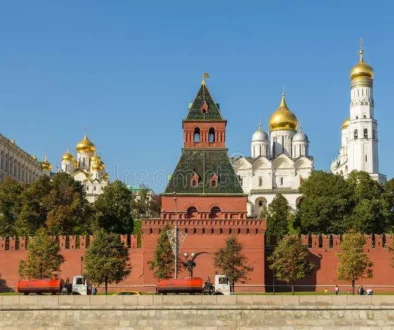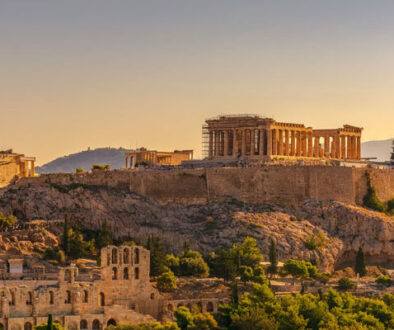Beijing’s Great Wall Legacy: Tracing China’s Ancient Wonder
Beijing’s Great Wall holds immense importance for China, not only as a physical defensive system but also as a symbol of national pride. This article aims to provide a comprehensive understanding of the Great Wall, its historical significance, and its enduring influence on China and the world.
The Great Wall’s Origins
The construction of the Great Wall can be traced back to ancient times. With a history dating back over two millennia, it was initially built to protect China from invasions and raids from nomadic tribes in the north. The architectural splendor of the Great Wall showcases the ingenuity and craftsmanship of the ancient Chinese.
Tracing the Great Wall’s Path
The Great Wall snakes across the Chinese landscape, encompassing various sections and key sites that offer a glimpse into its grandeur. From the well-preserved Badaling section to the rugged and remote Jiankou section, tourists can embark on a journey to explore the awe-inspiring beauty of this ancient wonder. However, accessibility and preservation challenges persist, requiring careful management and conservation efforts.

Exploring the Cultural Significance
Beyond its defensive purpose, the Great Wall holds deep cultural significance for the Chinese people. It is a symbol of China’s national identity, serving as a constant reminder of the country’s history and resilience. Recognized as a UNESCO World Heritage Site, the Great Wall stands as a testimony to the remarkable achievements of ancient Chinese civilization. Legends and folklore surrounding the wall further enhance its mystique.
Tracing the Great Wall’s Path
Sections and Key Sites
The Great Wall stretches across thousands of kilometers, encompassing various sections and key sites that offer different experiences for tourists. Each section has its own unique charm and historical significance. Here are some of the notable sections:
Badaling
Located just 70 kilometers northwest of Beijing, the Badaling section is the most well-preserved and easily accessible part of the Great Wall. Its popularity among tourists is due to its convenient location and breathtaking views. This section offers a glimpse into the grandeur and architectural brilliance of the wall.
Mutianyu
The Mutianyu section is renowned for its stunningly scenic surroundings. Situated in the Huairou District, around 70 kilometers northeast of Beijing, this section is known for its picturesque landscape and well-preserved fortifications. It offers a less crowded and more serene experience compared to the bustling Badaling section.
Jinshanling
For those seeking a more authentic and adventurous Great Wall experience, the Jinshanling section is an excellent choice. Located 140 kilometers northeast of Beijing, this section is renowned for its rugged terrain and pristine condition. It provides an immersive journey through history, with its watchtowers, beacon towers, and breathtaking panoramas.
Simatai
The Simatai section, situated 120 kilometers northeast of Beijing, offers a unique and challenging hiking experience. Its steep slopes and stunning views make it a favorite among hiking enthusiasts. The section’s unrestored parts give visitors a glimpse into the original construction of the Great Wall, as they witness the passage of time.
Accessibility for Tourists
Accessibility to the Great Wall has significantly improved over the years, enabling more tourists to experience its magnificence. Most sections are easily accessible from Beijing, with transportation options including private cars, public buses, and organized tours. In recent times, the Chinese government has focused on upgrading transportation infrastructure to make the journey more convenient for visitors.
Tourists visiting popular sections like Badaling and Mutianyu can take advantage of cable cars or chairlifts, which provide easy access to the wall, especially for those with mobility issues. The well-built pathways and staircases make exploring the wall enjoyable for people of all ages and fitness levels. Furthermore, information boards and signposts are available at key points, aiding navigation and understanding of the historical context.

Challenges in Preservation
Preserving such an ancient and extensive structure presents numerous challenges. The Great Wall is exposed to natural elements such as rain, wind, and erosion, which gradually degrade its condition. Additionally, human activities and excessive tourism pose threats to its preservation.
Weathering and vegetation growth are constant challenges. Adequate maintenance and periodic restoration are necessary to combat these issues and ensure the longevity of the Great Wall. However, restoration efforts face the difficult task of maintaining the wall’s historical integrity while still allowing visitors to access and appreciate it. Striking a delicate balance between preservation and tourism activities is crucial for a sustainable future.
Furthermore, illegal activities, such as graffiti and theft, threaten the preservation of the Great Wall. Authorities are working diligently to combat these actions through increased security measures and public awareness campaigns. Collaborations with local communities, international organizations, and volunteers play an essential role in preserving the Great Wall for future generations to enjoy.
Great Wall’s Impact on Tourism
Tourism Infrastructure
The Great Wall’s immense cultural and historical significance has transformed it into a major tourist destination. As a result, significant efforts have been made to develop tourism infrastructure to accommodate the millions of visitors who flock to this iconic site each year.
Tourist facilities and amenities have been established in and around the Great Wall to enhance the visitor experience. Modern visitor centers provide historical and cultural information, maps, and guidance for exploring the different sections of the wall. Restrooms, restaurants, souvenir shops, and parking areas have also been constructed to cater to the needs of visitors.
Popular Tourist Activities
The Great Wall offers a plethora of activities and experiences for tourists, catering to diverse interests and preferences. Some of the popular activities include:
Hiking and Trekking
Hiking is one of the most sought-after activities on the Great Wall. Tourists can embark on various hiking routes, ranging from easy and family-friendly paths to more challenging and adventurous trails. Enjoying the stunning scenery while immersing oneself in the history and culture of the wall creates an unforgettable experience.

Camping and Overnight Stays
Some sections of the Great Wall allow visitors to camp overnight, providing a unique opportunity to experience the wall outside of regular visiting hours. Camping under the stars, surrounded by the ancient fortifications, adds a touch of enchantment to the adventure. These immersive experiences allow individuals to capture the essence of the Great Wall and forge deeper connections with its history.
Photography and Sightseeing
The Great Wall’s breathtaking landscapes and architectural details offer unparalleled photography opportunities. Photographers from around the world flock to capture the mesmerizing vistas, capturing the essence of this ancient wonder. Visitors can also savor the beauty of the wall by simply strolling along its pathways and immersing themselves in its historical grandeur.
Local Communities and Economy
The impact of tourism on the Great Wall extends beyond the site itself. Local communities surrounding the wall benefit from the influx of tourists, as it fuels the local economy and creates job opportunities. The increased demand for accommodations, restaurants, transportation services, and souvenir shops has led to the growth of businesses in these areas.
Furthermore, local residents often play an active role in sharing their knowledge, history, and culture with visitors. Community-based tourism initiatives have emerged, allowing tourists to engage with local villagers, participate in cultural activities, and gain a deeper understanding of the Great Wall’s significance in the lives of these communities.
While tourism brings economic benefits, it is crucial to strike a balance between sustainable development and preserving the cultural and natural integrity of the Great Wall. Efforts are being made to ensure that local communities are active contributors to the preservation and maintenance of the wall, allowing them to reap the economic benefits while safeguarding this ancient wonder for future generations.

Great Wall Today and Its Preservation
Conservation Efforts
Preserving and protecting the Great Wall is of paramount importance to ensure its longevity for future generations. Various conservation efforts are underway to protect this ancient wonder from degradation and safeguard its historical and cultural value.
Government organizations, heritage institutes, and local communities are actively involved in conservation projects. These initiatives focus on repairing damaged sections, reinforcing weak structures, and combating erosion caused by natural elements. Preservation techniques, such as non-invasive restoration and the use of traditional materials, are employed to maintain the authenticity of the Great Wall.
International collaborations and partnerships also play a vital role in supporting conservation efforts. The exchange of knowledge, expertise, and best practices between countries has led to innovative methods for preserving the wall. By combining modern technology and traditional conservation techniques, experts aim to achieve a sustainable preservation model.
The balance between Preservation and Tourism
The Great Wall’s popularity as a tourist destination presents a challenging balance between preservation and tourism. While tourism helps generate revenue for conservation efforts, it also poses risks to the integrity of the wall. Managing visitor flow and minimizing human impact on the delicate structure is crucial.
Efforts are being made to ensure responsible tourism practices are implemented. Visitor education on proper behavior and respect for the wall’s historical value is emphasized. Regulations are in place to prevent vandalism, littering, and unauthorized restoration attempts. Guided tours and designated pathways help control visitor traffic and protect fragile sections of the wall.

Furthermore, the development of sustainable tourism models aims to strike a balance between economic benefits and heritage preservation. Sustainable practices include limiting the number of visitors to sensitive areas, promoting low-impact transportation options, and investing in renewable energy sources for tourist facilities.
Future Challenges and Sustainable Practices
The Great Wall faces ongoing challenges in terms of preservation and sustainability. Some of the key challenges include increased visitor numbers, climate change, and urban development near the wall. It is crucial to address these challenges with innovative and sustainable practices to ensure the Great Wall’s continued existence.
To combat the impact of high visitor numbers, steps such as ticket quotas, advanced booking systems, and time-specific entry slots can be implemented. Limiting foot traffic and adopting conservation-focused tourism practices will help protect the fragile sections of the wall.
Climate change poses a threat to the Great Wall’s preservation as extreme weather conditions, increased temperatures, and higher humidity can accelerate degradation. Implementing climate mitigation measures, such as monitoring and adjusting visitor numbers during extreme weather conditions, is important.
Furthermore, harmonizing urban development near the Great Wall is essential to minimize its impact on the surrounding environment. Careful zoning and land-use planning can help protect the natural landscapes and buffer zones around the wall.
By embracing sustainable practices, investing in conservation research, and fostering collaborations between stakeholders, the Great Wall can be preserved for future generations to cherish and appreciate.
Great Wall’s Impact on China’s Image
Global Recognition and Tourism Promotion
The Great Wall of China stands as a globally recognized symbol of Chinese culture and history. Its grandeur and historical significance have made it one of the most iconic landmarks in the world. The Great Wall’s recognition not only draws millions of tourists but also contributes to China’s positive image on the global stage.
The Chinese government recognizes the promotional value of the Great Wall for tourism and has invested in extensive marketing campaigns. The wall is showcased as a must-visit destination, attracting travelers from all corners of the globe. Through strategic tourism promotion, the Great Wall continues to enhance China’s reputation as a culturally rich and diverse nation.
Influence on Arts, Literature, and Film
The Great Wall’s impact extends beyond physical boundaries and seeps into various forms of artistic expression. Artists, writers, and filmmakers have drawn inspiration from the wall’s historical and cultural significance, resulting in numerous artistic works that showcase its magnificence.

In literature, the Great Wall has been featured in novels, poems, and historical narratives, symbolizing national pride, resilience, and perseverance. It serves as a backdrop for stories that explore themes of bravery, heroism, and the human spirit.
Similarly, the silver screen has witnessed the Great Wall’s influence in numerous films. Its grand architecture and profound historical context have made it a popular setting for both domestic and international productions. These films not only entertain but also contribute to the worldwide recognition and fascination with the Great Wall.
Symbol of Chinese Resilience
Above all else, the Great Wall symbolizes the resilience of the Chinese people. Throughout centuries of history, the wall has stood firm, bearing witness to triumphs and tribulations. It embodies the determination and strength of the Chinese nation.
The Great Wall’s symbolism resonates with both domestic and international audiences. It represents the unwavering spirit of the Chinese people in the face of challenges. As a symbol of unity and fortitude, the Great Wall holds a special place in the hearts and minds of the Chinese, serving as a reminder of the nation’s remarkable history and cultural heritage.
Conclusion: Beijing’s Great Wall
Beijing’s Great Wall stands as an everlasting symbol of China’s ancient wonder. Its legacy continues to captivate and inspire people worldwide. As preservation efforts persist, it is crucial to strike a balance between tourism and conservation to ensure that future generations can marvel at this extraordinary piece of history.
Also Read:



